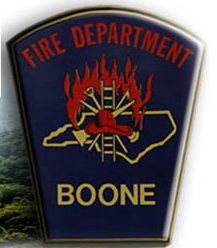Last Updated on November 15, 2016 4:49 pm
[Ashe and Watauga Counties] – AppHealthCare (Appalachian District Health Department) is advising residents and visitors to be aware of the possibility of smoke from the wildfires in Western North Carolina.
State health officials from the N.C. Department of Health and Human Services recommend the following information. Wildfires present health risks for everyone, but wildfire smoke may cause eye irritation, cough, sore throat, chest pain, chest tightness, shortness of breath, severe fatigue, or wheezing. Wildfire smoke may make these symptoms worse in people who have respiratory allergies, asthma, chronic obstructive pulmonary disease (COPD), congestive heart failure, or angina. Contact your doctor if you are experiencing a worsening in your symptoms.
When air quality is poor, all residents (especially older adults, children, and those with heart or lung disease) are encouraged to follow these guidelines to prevent illness:
- Limit prolonged or heavy exertion outdoors.
- Keep indoor air as clean as possible. Do not smoke. Avoid vacuuming unless there is a HEPA filter vacuum or central vacuum system. Do not use air purifying ozone generators.
- Have a several-day supply of nonperishable groceries. Avoid cooking with gas, wood, or propane stoves if possible.
- Pay attention to local air quality reports; check newspaper and web site reports (ncair.org).
- If possible, replace the air filter for your HVAC system with a pleated medium- or high-efficiency particle filter (rated MERV 8 or higher) to help filter out smoke and particulates.
- Use wet wipes or a damp mop to remove visible particles inside your home.
People with asthma or another lung condition should follow their doctor’s advice about medications and their respiratory management plan. A respiratory management plan involves tracking symptoms to determine when to use additional medications or seek medical treatment. These symptoms may include difficulty in breathing normally; cough with or without mucus; chest discomfort; and wheezing and shortness of breath.
SOME PEOPLE ARE MORE SUSCEPTIBLE THAN OTHERS:
Most healthy adults and children will not experience ill effects from smoke exposure. Certain sensitive populations may experience more symptoms from smoke exposure. Sensitive populations may include:
- Individuals with asthma or other respiratory disease
- Individuals with chronic obstructive pulmonary disease (COPD)
- Individuals with airway hyper responsiveness
- Individuals with cardiovascular disease
- The elderly
- Children
- Pregnant women
- Smokers
WHEN SMOKE IS PRESENT TO THE POINT OF LIMITING VISIBILITY:
- Pay attention to local weather and news reports. Information on the fire can be found at: http://inciweb.nwcg.gov/state/34/#
- Try to stay inside with windows and doors shut.
- Use the recycle or re-circulate mode on the air conditioner in your home or car.
- Limit physical exertion outdoors.
- Asthmatics should follow their asthma management plan.
- Keep at least a five-day supply of medication on hand.
- Contact your doctor if you have symptoms such as chest pain, chest tightness, shortness of breath, or severe fatigue.
- Keep airways moist by drinking lots of water.
Source: Ammann, H., Blaisdell, R., Lipsett, M., Stone, S., & Therriault, S. (2001). Wildfire smoke: a guide for public health officials. Seattle, WA: University of Washington. And Dare County Department of Public Health.
For more information on protecting yourself from wildfire smoke exposure visit: http://www.cdc.gov/features/wildfires/


















